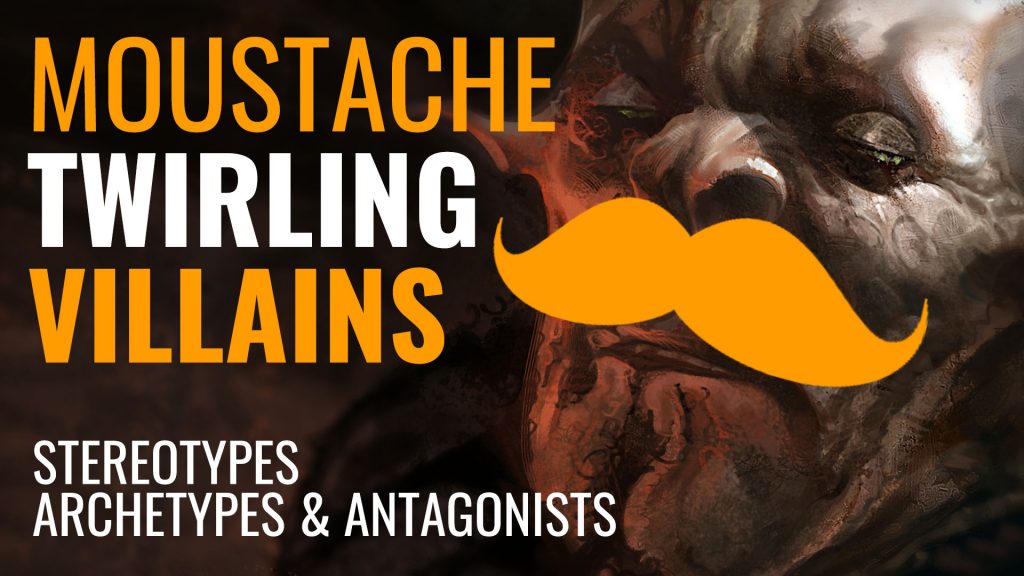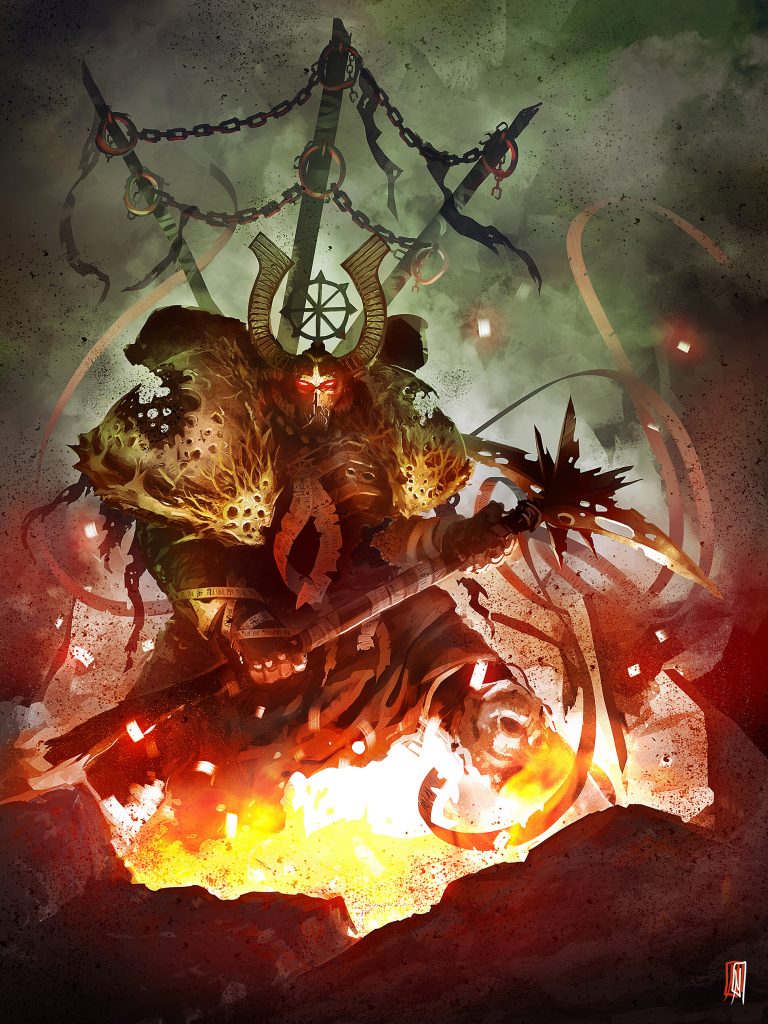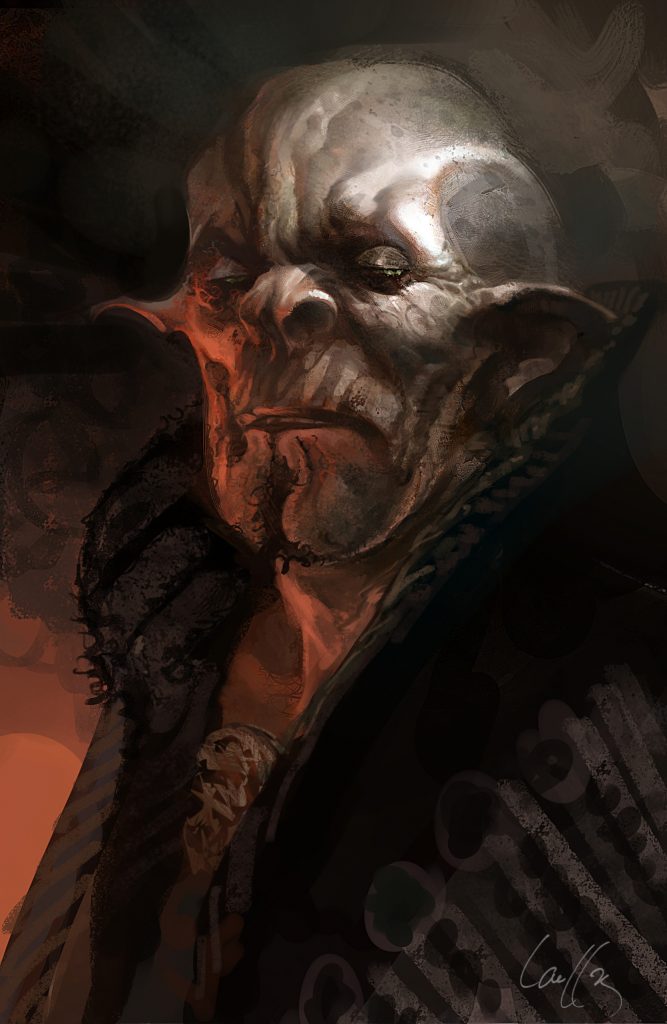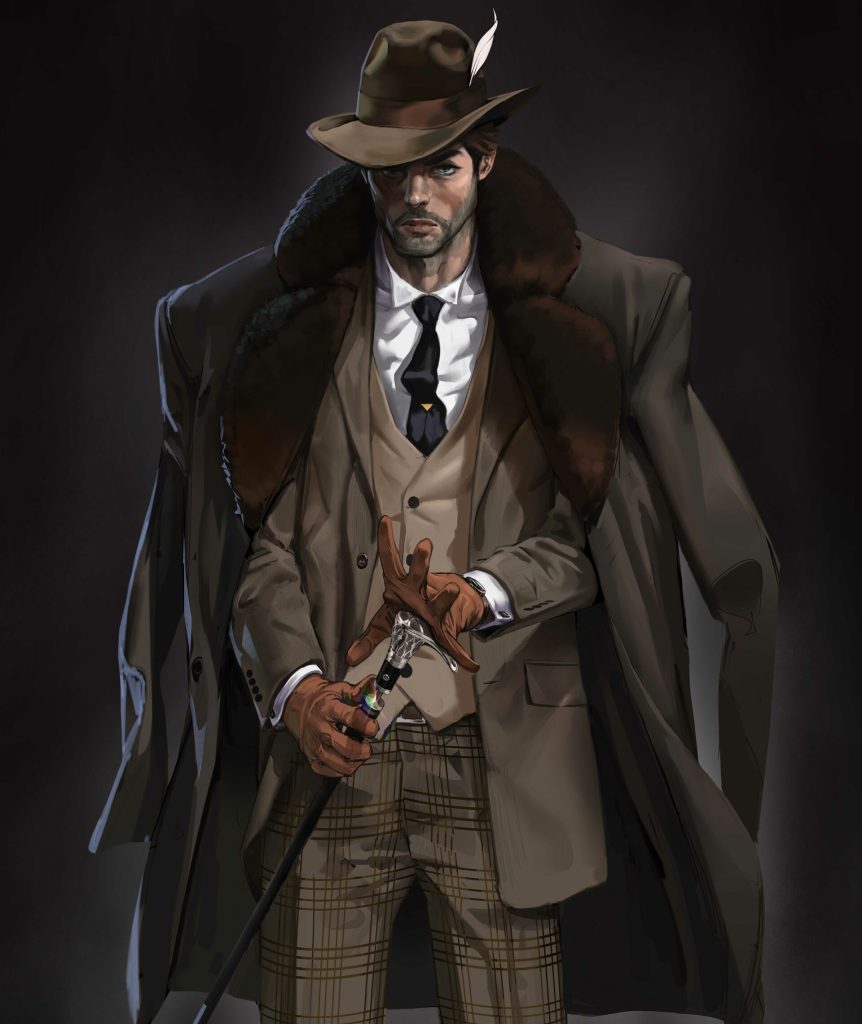Moustache Twirling Villains: Stereotypes, Archetypes & Antagonists
August 20, 2019 by crew
Chris: Constructing a campaign or one-shot for a roleplaying game requires not just writing some sort of plot for your game, and having antagonists and monsters described using attributes and statistics, but also requires creating antagonists as characters.
Hold on - but haven’t we just done that? I have created my Orc Warboss and worked out his strength, intelligence, weapons, powers, feats, and artefacts. I even worked out his alignment. But listing numeric characteristics and a list of powers is not the same as describing the personality, quirks, hopes, desires, and fears of an antagonist.
Stereotypes
C: So, what is a stereotype exactly?
“A widely held but fixed and oversimplified image or idea of a particular type of person or thing.”
Stereotypes exist because we as humans are very good at pattern recognition. We see male, female, soldier, doctor, priest and computer programmer. French, German, Japanese. We like to slot people we meet, at least initially, into categories. This is in part because we have a limit in our mind to how many individuals we can recognise in our “monkey sphere”, also known as Dunbar’s number.
It is a cognitive limit, and we tend to form up to 150 stable relationships, beyond which we will start to just class people under general groups in our minds. Hence why we begin to think about people in terms of stereotypes. It is a short-hand for us to understand people who we don’t have deeper connections with.
Are stereotypes a bad thing and in this case are they bad for games?
Depending on the context stereotypes can be offensive, and when running games set in our world, especially historically or in a contemporary setting. Making sweeping generalisations about an entire ethnic group, religion, or nationality is a quick way to disaster. At it's worst it paints the world in simplistic ways that do not make for engaging stories. Games get stagnant when every single elf is aloof, beautiful, well-read, elegant, and mysterious in character. Not all orcs are bloodthirsty raiders, illiterate, and brutish.
James: When using a stereotype for NPCs to fill out a scene you might be called on to interact with the party with these characters. To quickly backfill the NPC with a bit of flavour and assign them a couple of character traits not defined by the stereotype. For example, enthusiastic and verbose, or loud and welcoming. This helps make your stereotypes a little more than mere paper cutouts and also gives you something other than the stereotype to pin to the NPC if players pursue interacting with them.
C: Taking the above into account when using stereotypes in games, they are often best used to establish a preconception of how a certain person or persons act, so that you then have the basis to present how another character of the same origin is, in fact, different, and as a result more interesting and nuanced. This, in turn, can help draw players further into the details of the group of people as they seek to better understand society as a whole.
Stereotypes are of course good shortcuts when describing scenes filled with lots of characters. The Underhive scum are all shifty looking. In Japan, while waiting for the bullet train the locals all rigorously follow the rules of the train station when queuing. The braying mob are all bellicose, waving an iconic coloured banner or wearing clothing that identifies them as part of this political mob. Stereotypes are fine, just remember to dive deeper.
Stereotypes are incredibly useful in the context of conspiracies and intrigues, as players must reevaluate their own biases so that they can take the clues and information they have and recontextualise it in order to figure out the actual truth of the matter.
“It’s like he had to show me a negative in order to see the positive”
Will Graham - Hannibal
Just because the vampire is a Banu Haqim, it doesn’t mean they are the one to have committed the terrible act of draining the blood of the court Harpy in the Camarilla domain.
Archetypes
C: So how does an archetype differ to a stereotype?
“A very typical example of a thing or person”
Space Marine, Doctor, Archaeologist, Sorceror. All of these are archetypes. Each one has certain traits, abilities, and equipment that makes them able to fulfil that role. But just as not all Elves are from Rivendell, not all wizards perform magic the same way.
As a brief aside this is perhaps best exemplified in the creation of Vampire: The Requiem when Vampire: the Masquerade had originally ended. In Masquerade the Clans - each type of vampire - were typically presented using stereotypes. Ventrue characters are aloof and all trust fund kiddies or elders with their fingers in the stock market. All Brujah were angry gangbangers. Gangrel were all feral loners. Nosferatu were all repulsive and ugly.
In Requiem, they presented the vampire Clans as archetypes instead, where each Clan represented a type of vampire we recognise in media. So the Ventrue now were still lords, but encapsulated all the types of domineering and lordly vampires and were lords of both men and animals. The Mekhet are the shadowy, secretive vampires, who are either spies or engrossed in ancient texts. The Nosferatu now exuded an aura of fear and are not just ugly, but unnatural, which could also mean unnatural and off-putting beauty or a stench of death.
Thus archetypes describe a collection of traits that are common to a type of person, or job, but within that archetype, there is still a vast amount of diversity that can be explored. A whole host of personalities, all with their own unique quirks.
The Old Wise Man Is Grey...
C: Now stereotypes are a great shorthand when you do need to quickly create characters that are only appearing in the story for a moment. But the danger really comes when the stereotype becomes the cliche.
“A phrase or opinion that is overused and betrays a lack of original thought.”
The problem with cliches is that they break immersion and the verisimilitude of the game. If you are running a game set in an abandoned space station, and ravenous aliens attack, don’t be surprised if the players are not surprised if the aliens happen to be rather like certain Xenomorphs or genestealers.
Likewise, if the ghost haunting the manor house is moaning and clanking chains, the players are not going to be shocked. Thus a cliche can either be the antagonist itself, or the plot you are playing through. But with an awareness of your writing, you can dodge these traps, and create exciting content that the players will find original.
Passion Plays & Mythic Resonance
C: So what is the definition of a Passion Play?
“A dramatic representation of the scenes connected with the passion and crucifixion of Jesus”
In a similar way, roleplay games can act in the same manner, where the story and plot being played out can invoke the symbology of myths, legends, history and folklore. We see this all the time in media, for example in Supernatural, where Dean and Sam take the role of the Biblical Caine and Able. Frankenstein is, of course, the story of the modern Prometheus, stealing fire from the gods.
In the same way, we can look at these tales and classic story forms and use them in our own games. Of course, there is the danger of being cliched, but these classic tales and archetypes have such a resonance in our collective consciousness that players can help but feel like they recognise these characters and an automatic connection to the story being played out. One again there is the opportunity here to invert expectations.
Shave That Moustache Twirling Villain!
C: The quote below helps establish what the final message is of this article - how to build better antagonists.
“Alfred Molina played Whiplash in the 1999 live-action film version Dudley Do-Right. Whiplash is the stereotypical villain in the style of stock characters found in silent movies and earlier stage melodrama, wearing black clothing and a top hat and with a handlebar moustache."
The danger of creating antagonists for games is broadcasting your intentions. The old wise man who gives them a quest is clearly going to die. The old lord in the castle never drinks his wine…. of course, he is a vampire! Every Chaos Space Marine lord is grim-faced, has hollow sunken eye sockets, and quick to anger. The Japanese gangster not only knows karate and how to use a samurai sword, but is cultured and collects art - a gentleman thug.
The problem is such antagonists are beyond being just cliches and stereotypes, they have descended into being cartoonish, one-dimensional, and evil for the sake of being evil. Returning to our Chaos Space Marine Lord, we understand that he was corrupted by Chaos, but perhaps we should think about just how that corruption took place, how did he lose his faith? But also what are his plans? Blowing up planets just for giggles is not enough. Is there a design to his nefarious machinations? Why is this planet being invaded?
Likewise with the dark god that is wanting that ancient jewel back...
J: When writing your villain look at your initial assumptions about their character. I like to consider every choice I've assumed and whether it'd be either equally or more interesting to change it.
This helps vary your characters and help make a more diverse world, especially in settings with rigidly defined stereotypes such as aloof elves, cranky dwarves, and angry orcs.
It's also helpful to consider aligning their character to their goals as this can give you a prompt with writing. If your villain wants to rule everything you could comfortably expect them to be driven and determined - a lazy villain with this goal would need a slightly different plan. Maybe in ruling the world they want to be able to delegate all responsibility for looking after themselves.
A villain wanting to wipe out existence might be vindictively reacting to perceived slights by the fates or they may be an immortal mired in ennui looking for release.
C: As always there is no free lunch, and the only way to know if any of the above helps is to start trying them out in your games.
By Chris Handley & James Valadas Marques - Darker Days Radio
Art by Mathieu Lauffray, Thiago Richau, Wei Feng, Diana Franco, Alexandre Noyer, Yuriy Chemezov
Remember - shave the villain!
"...just as not all Elves are from Rivendell, not all wizards perform magic the same way"
Supported by (Turn Off)
Supported by (Turn Off)
"Remember - shave the villain!"
Supported by (Turn Off)


















































































Stereotypes are not always bad, it depends on the game you’re playing. Pulp games (and movies) set in the 30’s and 40’s rely on stereotypical villains… the nazis… they are the goblins of the pulp gaming world and there to be slaughtered. Not every german is a nazi, some are cunning villains, tough henchmen, femme fatale, double agents and love interests, but the rank and file are just there for target practice. It makes the PC’s feel heroic. Other settings really on stereotypes, the town guard, the buxom barmaid, the mysterious stranger. Creating a world full of interesting NPC’s takes… Read more »
I think the key is working towards maybe two key words for NPCs as they talked about in general. If you have a barmaid/barman in the tavern give him ‘grumpy/bored’ or ‘smart/grim’ or something like that so that when you’re talking as/about the character you’ve got something to draw on to make them feel different. The same goes for lackeys in combat. I am so tired of naming the characters Bandit #1, Bandit #2, Bandit #3 – I now try and do something I learned from Joe Abercrombie books and give them a defining feature. So, it might be Big… Read more »
That’s fine in the narrative aspect of the encounter, but naming every NPC in the fight and/or giving them a quirk is often lost on the players (and wastes GM time) if Bandit 1 has a life expectancy of 2-3 combat rounds. When battle begins there is confusion and chaos where you are so busy fighting for you life that don’t take in the details…. However, when there are only a few adversaries left… that’s when you describe the survivors in detail… their companions are dead and their fate approaches… One may become more aggressive, having lost a friend, or… Read more »
Clearly the advice of the article is more about villains, major antagonists, and not mooks.
Depending on the game you are playing the level of detail is a tuneable dial when dealing with mooks. But even as a group, mooks have descriptors and activities that can diverge from the stereotype.
Literally a quote from what I wrote in the article;
“Stereotypes are of course good shortcuts when describing scenes filled with lots of characters. The Underhive scum are all shifty looking. In Japan, while waiting for the bullet train the locals all rigorously follow the rules of the train station when queuing. The braying mob are all bellicose, waving an iconic coloured banner or wearing clothing that identifies them as part of this political mob. Stereotypes are fine, just remember to dive deeper.”
Interesting tips … but what about ‘Lamp shading’ ?
https://tvtropes.org/pmwiki/pmwiki.php/Main/LampshadeHanging
OR to quote from Kingsman : “This is not that kind of movie … “
Fascinating read, thanks! One thing I’ve sometimes found useful as a way to make less stereotypical characters is, funnily enough, to borrow from stereotypes of people I know. How to give this orc boss a different personality to the last one the players encountered? What if this orc boss was a character being played by my well-meaning, community-minded but busybody and obstinate neighbour Ruth? She’s a lovely person (most of the time!) in real life, but if I exaggerate her, turn her into a stereotype, and then apply that framing to the character in the game, then I have an… Read more »